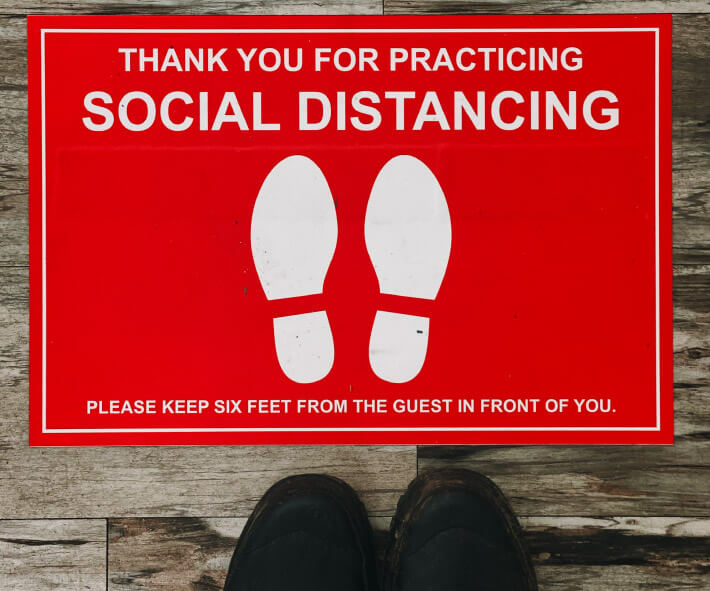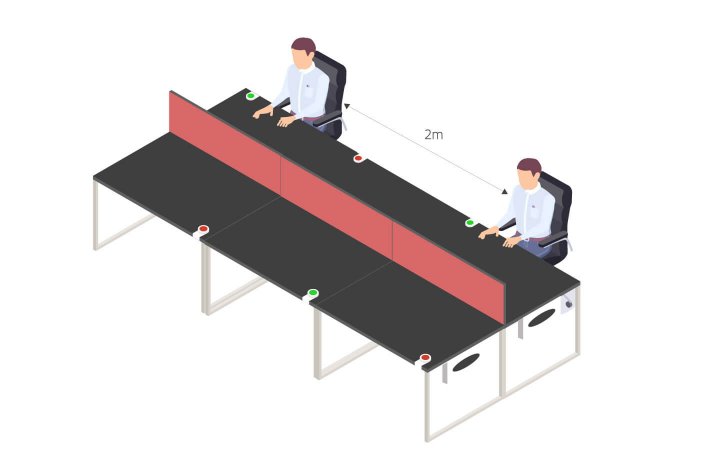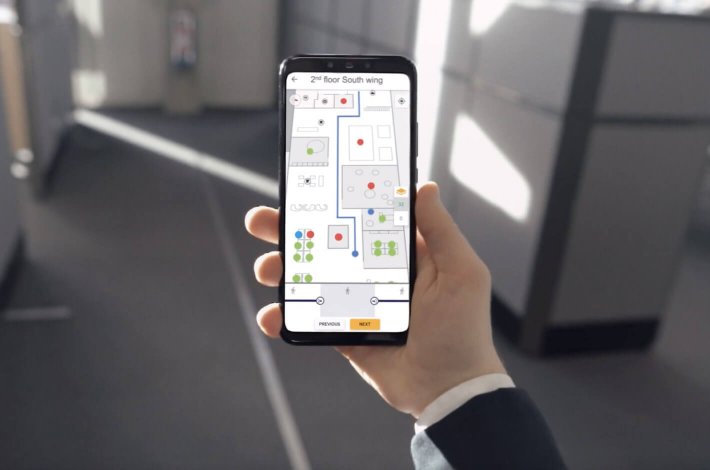
9 steps towards successful hybrid working
In this article we look at 9 areas that companies should focus on to ensure they successfully implement a hybrid working strategy.
Returning to work after lockdown, and what the workplace will look like post-pandemic, is becoming increasingly concerning for many businesses. One thing is clear – even once lockdown eventually does come to an end, social distancing measures will likely still have to be in place, drastically changing the way we work for the foreseeable future. For many business owners, this can be worrying. You’re concerned that your office isn’t prepared, or that you’ll have to spend huge amounts of money in the short-term – but this isn’t necessarily the case.
So, the question remains: how do we return to work after lockdown, and enforce social distancing in the workplace? Let’s take a look.
After weeks at home, this is possibly the last thing anyone wants to hear; however, in order to enforce social distancing in the workplace, it’s extremely likely that working from home will still be required for some employees.
While it may not be ideal, it’s one of the most effective ways to enforce social distancing, as you can control office occupancy levels and gradually bring more employees back to work. This can be done by allowing certain employees to work from home a set number of days a week on a rotational basis, or by simply communicating with your team daily to decide who may need to go into the office.
However, managing this could get extremely complicated if you have a particularly large team, and could lead to miscommunication where employees have to be sent home, or the office becomes too overcrowded to maintain social distancing. To avoid this, the capacity and the layout of your workspace needs to be managed – but how?
In the post-pandemic office, we can expect to see signs, posters and floor markings just about everywhere. Similar to how supermarkets and other key businesses are currently marking out 2m social distancing areas on their floors, it’s likely this practice will be mirrored in office spaces.
Using graphics throughout your office is one of the quickest, easiest ways to begin enforcing social distancing in the workplace. You can measure according to 2m distancing throughout your office, and use floor markings to show staff where they should be standing or sitting to abide by social distancing rules. On top of this, you can put up signs and posters that remind workers to keep distance from one another, encourage hygiene or highlight high traffic areas, such as canteens or toilets. This is likely to be a method that you’ll use in the initial stages of social distancing in the workplace, however you’ll also have to think about the future.
In the long term, interior designers will incorporate graphic elements such as signs and floor markings into the very fabric of their designs. So, while you can enforce social distancing in the workplace using these short term methods, it’s likely that you’ll have to think about redesigning your office for the post-pandemic world.

Recently, there has been much speculation about whether the impact of COVID-19 will lead to the metaphorical ‘death’ of the open plan office, and that paranoia surrounding catching illnesses could result in the return of the dreaded office cubicle. However, open offices still have their place in the post-lockdown world, and they can easily be modified to accommodate social distancing, while avoiding alienating workers altogether.
In order to prepare your office for the inevitable COVID-19 culture shift, further office space planning will be required. This could see more radical changes, such as replanning office spaces completely to enforce 2M distancing rules (see the 6 feet office by Cushman & Wakefield as a somewhat extreme example). We could even see businesses reconfiguring their offices to have a unidirectional flow, where employees move around the space in one direction – a method we’ve seen implemented in supermarkets across the country. While it’s unlikely that you’ll need to implement these kinds of huge changes immediately, you will need to modify your office in the short term.
To do this, you can evaluate your office space in terms of what desks can be used while still maintaining a 2m distance. This is often referred to as a ‘checkerboard’ – where one desk (or seat) may be in use, while the one next to it is left empty, and so on. Reconfiguring space in this simple way will enable you to better enforce social distancing, as it reduces the amount of time workers spend in close proximity to one another.

In order to effectively enforce social distancing in the workplace, there needs to be some kind of cultural shift. Because of the virus, the way we work has changed, and once employees return to work, you’ll have to reinforce social distancing messaging wherever possible. This could include changing the way you use and interact with now high-risk areas such as kitchens and bathrooms, and putting rules in place so that only a certain number of employees can access these areas at one time.
It’s important to remember that these changes don’t have to mean isolating staff; you can still maintain the social and collaborative aspects of your office space without compromising your workers’ health. Instead of using physical barriers, you’ll find social distancing measures will run a lot more smoothly if they are properly communicated and understood. While your physical office may change as a result of COVID-19, the way your workers interact and collaborate with each other doesn’t have to if the space is configured properly.

Arguably, something that is going to be extremely helpful in enforcing social distancing in the workplace is technology.
From voice activation, to motion and gesture sensors, technology will be vital in returning to work after lockdown and enforcing social distancing. However, implementing smart tech can often be expensive, and it may be worth looking into a more viable solution in the short term.
That’s why Dale has partnered with iotspot, to bring you an occupancy management app that allows you to successfully enforce social distancing and keep your employees safe.
With the app, you can monitor office capacity by enabling employees to book desk space if they need to come into the office. The app live updates as desks are booked, and once every desk is booked, any additional bookings will be blocked – ensuring that your office never becomes overcrowded, and that you are able to better manage your employees through this challenging time.
To learn more about how Dale can get your business back on track after lockdown with our unique technology offering, check out our social distancing in the office app today.
Advice Centre Topics
Recent Content

In this article we look at 9 areas that companies should focus on to ensure they successfully implement a hybrid working strategy.
Content that may interest you

In this article, we discuss not only how much we can save by downsizing our office space, but all the other benefits we may not have considered…

Recruitment and retention are now key priorities for most business leaders.
But what’s driving so many people to change jobs? Learn more in our article

Working from home in lockdown has proved to be a success for some businesses, but what does this mean for the office on your return? Find out in this blog.
Do you have an office fit-out project you would like to discuss?
Contact us for a no obligation discussion
Dale Office Interiors
Broombank Rd, Sheepbridge Ln, Chesterfield
S41 9QJ
Phone: (0)114 233 1115
Email: [email protected]